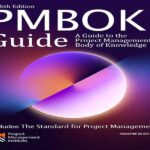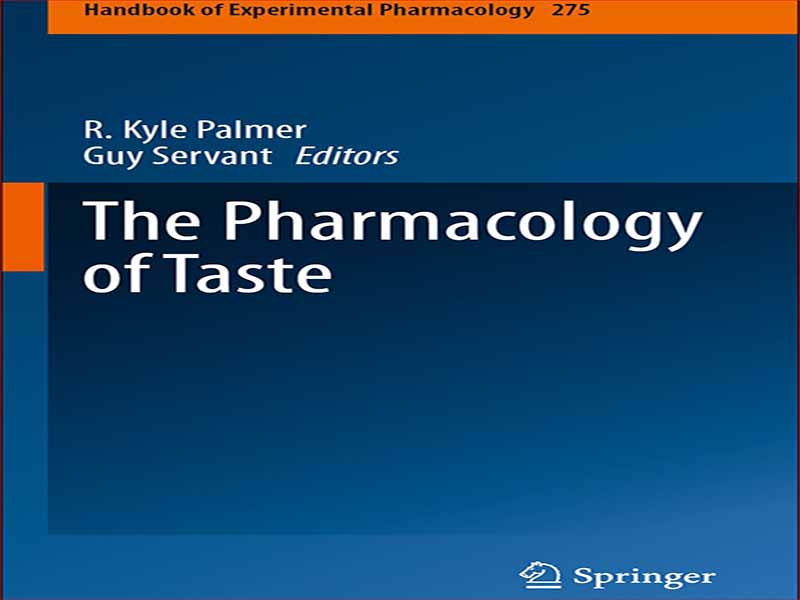- عنوان کتاب: The Pharmacology of Taste
- نویسنده: R. Kyle Palmer
- حوزه: فارماکولوژی
- سال انتشار: 2022
- تعداد صفحه: 357
- زبان اصلی: انگلیسی
- نوع فایل: pdf
- حجم فایل: 10.8 مگابایت
همه به سلیقه علاقه دارند. گفتن اینکه طعم و مزه در زندگی ما اهمیت مرکزی دارد، هذل آمیز نیست، فقط یک واقعیت نادیده گرفته شده است. طعم بخشی از تجربه روزانه ماست. انتخاب های ما را در مورد آنچه می خوریم و می نوشیم هدایت می کند و در نتیجه بر تمام فعالیت های مربوط به تهیه و تهیه غذا تأثیر می گذارد. یکی از بزرگترین بخشهای اقتصاد جهان عمدتاً از تقاضا برای طعم تغذیه میشود – درآمدهای سالانه ترکیبی از مواد تشکیل دهنده طعم، غذا و نوشیدنی، و صنایع رستورانداری، که همگی توسط رقابت شدید برای ایجاد جذابترین طعمها برای مصرفکنندگان هدایت میشوند. به راحتی به تریلیون ها دلار می رسد. معمولاً فرض بر این است که زمانی که انسان ها یک گونه جستجوگر بودند، حس چشایی برای بقا بسیار مهم بود. طعم احتمالاً برای شناسایی و تمایز مواد خوراکی غنی از مواد مغذی از اقلام مشابه ظاهر می شود که از نظر مواد مغذی ضعیف (در نتیجه اتلاف تلاش) یا حتی بالقوه سمی یا آلوده بودند. این تصور به قدری پیش فرض جهانی است که تقریباً پیش پا افتاده است. همانطور که خوانندگان ما در این جلد متوجه خواهند شد، نقش طعم و مزه در هدایت بلع، همیشه زمانی که از طریق یک لنز آزمایشی مورد بررسی قرار می گیرد چندان ساده نیست. با این وجود، تردید کمی وجود دارد که طعم و مزه ارتباط تنگاتنگی با رفتارهای بلعیدنی دارد. اما حس چشایی عمیق تر به تجربه روزانه ما نفوذ می کند. ذوق چنان در روان ما ریشه دوانده است که حتی زبان ما، ابزار بیان برداشت ها و خواسته هایمان، بر اساس ذوق شکل می گیرد. قضاوت های خاص اغلب بر حسب ذائقه ترجمه می شوند، مانند نشان دادن سلیقه خوب در یک انتخاب یا عمل یا لباس، و برعکس، انزجار (از لاتین gustus یا gustare – طعم.) کلمات “شیرین”، “نمکی”، ” ترش، مزه، و تلخ، نه تنها برچسب هایی به ویژگی های حسی داده می شود (در فرهنگ غربی به “طعم های اساسی”) بلکه هر یک دارای معانی اضافی قابل توجهی است که به احساسات، نگرش ها یا اشیاء غیر مرتبط با واقعی تعمیم می یابد. محرک های چشایی
Everyone is interested in taste. To say that taste is centrally important to our lives is not hyperbole, just an underappreciated fact. Taste is a part of our daily experience. It guides our choices in what we eat and drink and thereby influences all activities relating to the procurement and preparation of food. One of the largest sectors of the world economy is fueled primarily by demand for taste – combined annual revenues from the flavor ingredients, food and beverage, and restaurant industries, all of which are driven by fierce competition to produce the most appealing tastes to consumers, easily range into the trillions of dollars. It is commonly assumed that when humans were a foraging species, the sense of taste was critically important for survival. Taste likely served to identify and distinguish nutrient-rich ingestibles from perhaps similarly appearing articles that were nutrient-poor (thus a waste of effort), or even potentially poisonous or contaminated. That notion is so universally presupposed that it is almost trite. As our readers will find in this volume, the role of taste in guiding ingestion is not always so straightforward when scrutinized through an experimental lens. Nevertheless, there is little question that taste is tightly connected to ingestive behaviors. But the sense of taste permeates our daily experience still more deeply. Taste is so ingrained in our psyche that even our language, our means of expressing our impressions and desires, is shaped by taste. Special judgements often are translated in terms of taste, as in demonstrating good taste in a choice or action or clothing, and the converse, disgust (from the Latin gustus or gustare – taste.) The words “sweet,” “salty,” “sour,” “savory,” and “bitter,” not only are the labels given to sensory qualities (in western culture to the “basic tastes”) but each also carries significant additional meanings generalizing to emotions, attitudes, or objects unrelated to actual taste stimuli.
این کتاب را میتوانید بصورت رایگان از لینک زیر دانلود نمایید.
Download: The Pharmacology of Taste




































نظرات کاربران